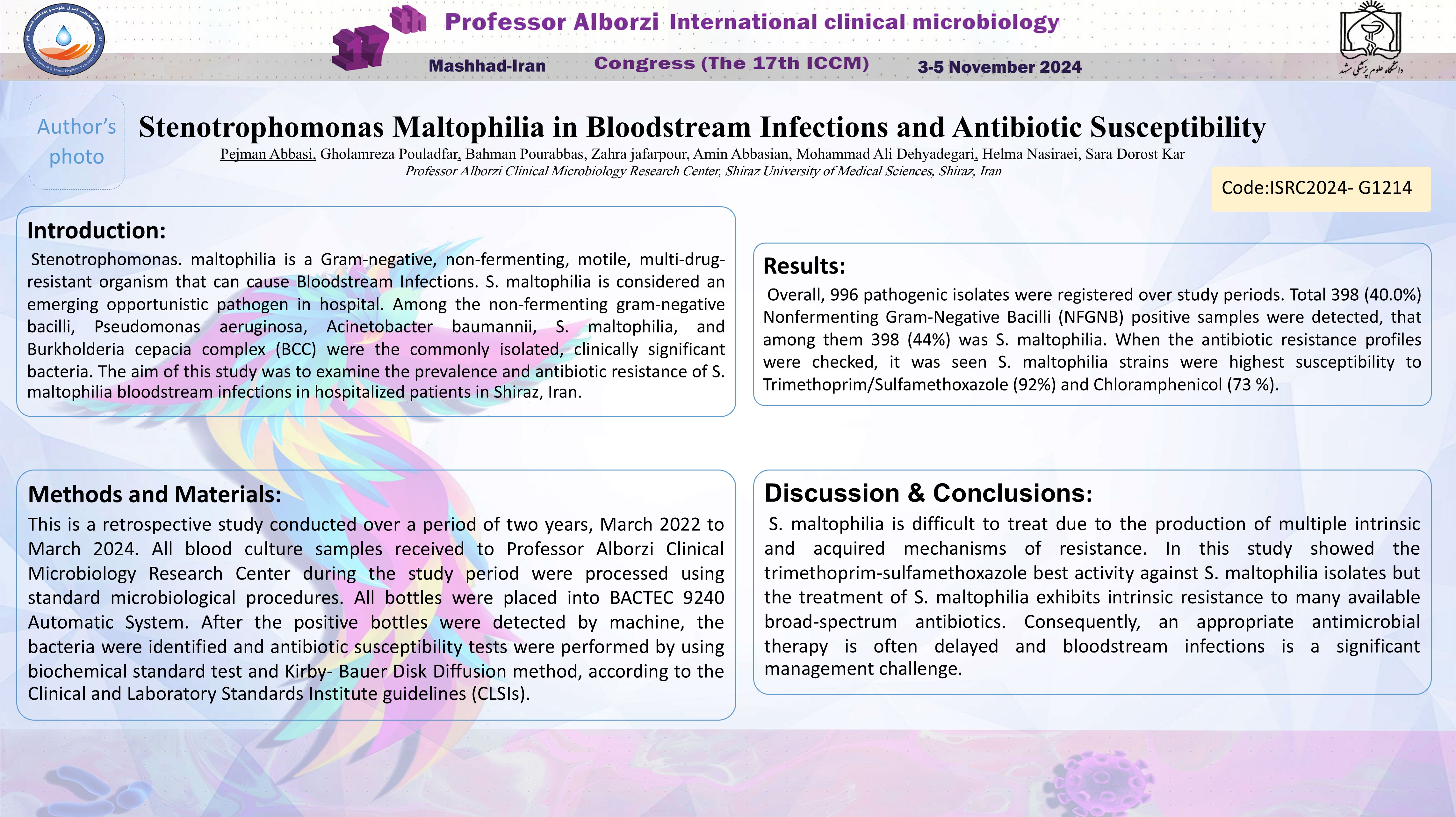Stenotrophomonas Maltophilia در عفونت های جریان خون و حساسیت آنتی بیوتیکی
کد: G-1214
نویسندگان: Pejman Abbasi © ℗, Gholamreza Pouladfar, Bahman Pourabbas, Zahra Jafarpour, Amin Abbasian, Mohammad Ali Dehyadegari, Helma Nasiraei, Sara Dorost Kar
زمان بندی: زمان بندی نشده!
دانلود: دانلود پوستر
خلاصه مقاله:
خلاصه مقاله
Introduction and Objectives: Stenotrophomonas. maltophilia is a Gram-negative, non-fermenting, motile, multi-drug-resistant organism that can cause Bloodstream Infections. S. maltophilia is considered an emerging opportunistic pathogen in hospital. Among the non-fermenting gram-negative bacilli, Pseudomonas aeruginosa, Acinetobacter baumannii, S. maltophilia, and Burkholderia cepacia complex (BCC) were the commonly isolated, clinically significant bacteria. The aim of this study was to examine the prevalence and antibiotic resistance of S. maltophilia bloodstream infections in hospitalized patients in Shiraz, Iran. Materials and Methods: This is a retrospective study conducted over a period of two years, March 2022 to March 2024. All blood culture samples received to Professor Alborzi Clinical Microbiology Research Center during the study period were processed using standard microbiological procedures. All bottles were placed into BACTEC 9240 Automatic System. After the positive bottles were detected by machine, the bacteria were identified and antibiotic susceptibility tests were performed by using biochemical standard test and Kirby- Bauer Disk Diffusion method, according to the Clinical and Laboratory Standards Institute guidelines (CLSIs). Results: Overall, 996 pathogenic isolates were registered over study periods. Total 398 (40.0%) Nonfermenting Gram-Negative Bacilli (NFGNB) positive samples were detected, that among them 398 (44%) was S. maltophilia. When the antibiotic resistance profiles were checked, it was seen S. maltophilia strains were highest susceptibility to Trimethoprim/Sulfamethoxazole (92%) and Chloramphenicol (73 %). Conclusion: S. maltophilia is difficult to treat due to the production of multiple intrinsic and acquired mechanisms of resistance. In this study showed the trimethoprim-sulfamethoxazole best activity against S. maltophilia isolates but the treatment of S. maltophilia exhibits intrinsic resistance to many available broad-spectrum antibiotics. Consequently, an appropriate antimicrobial therapy is often delayed and bloodstream infections is a significant management challenge.
کلمات کلیدی
Stenotrophomonas maltophilia, Antibiotic Susceptibility, Shiraz
